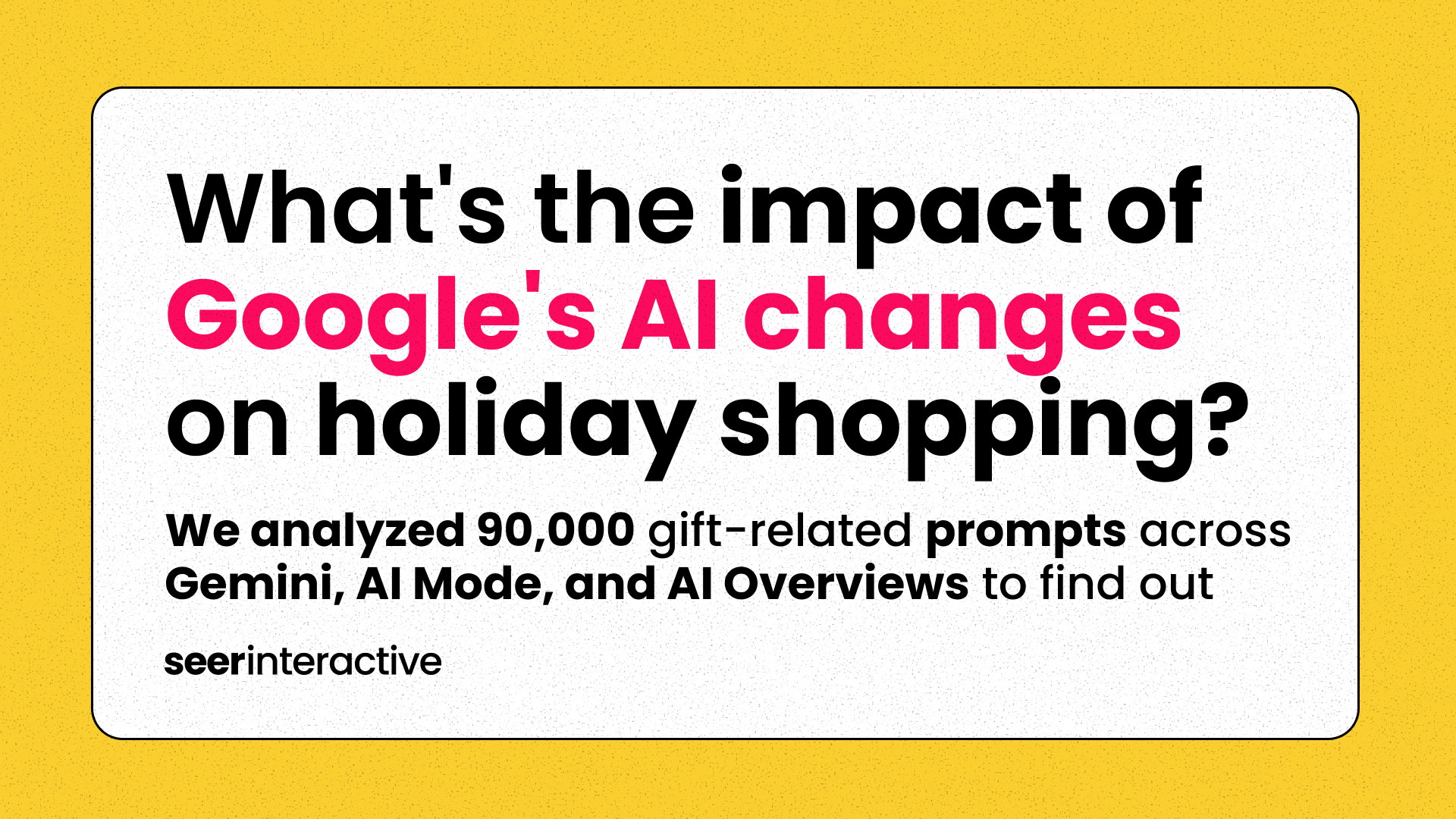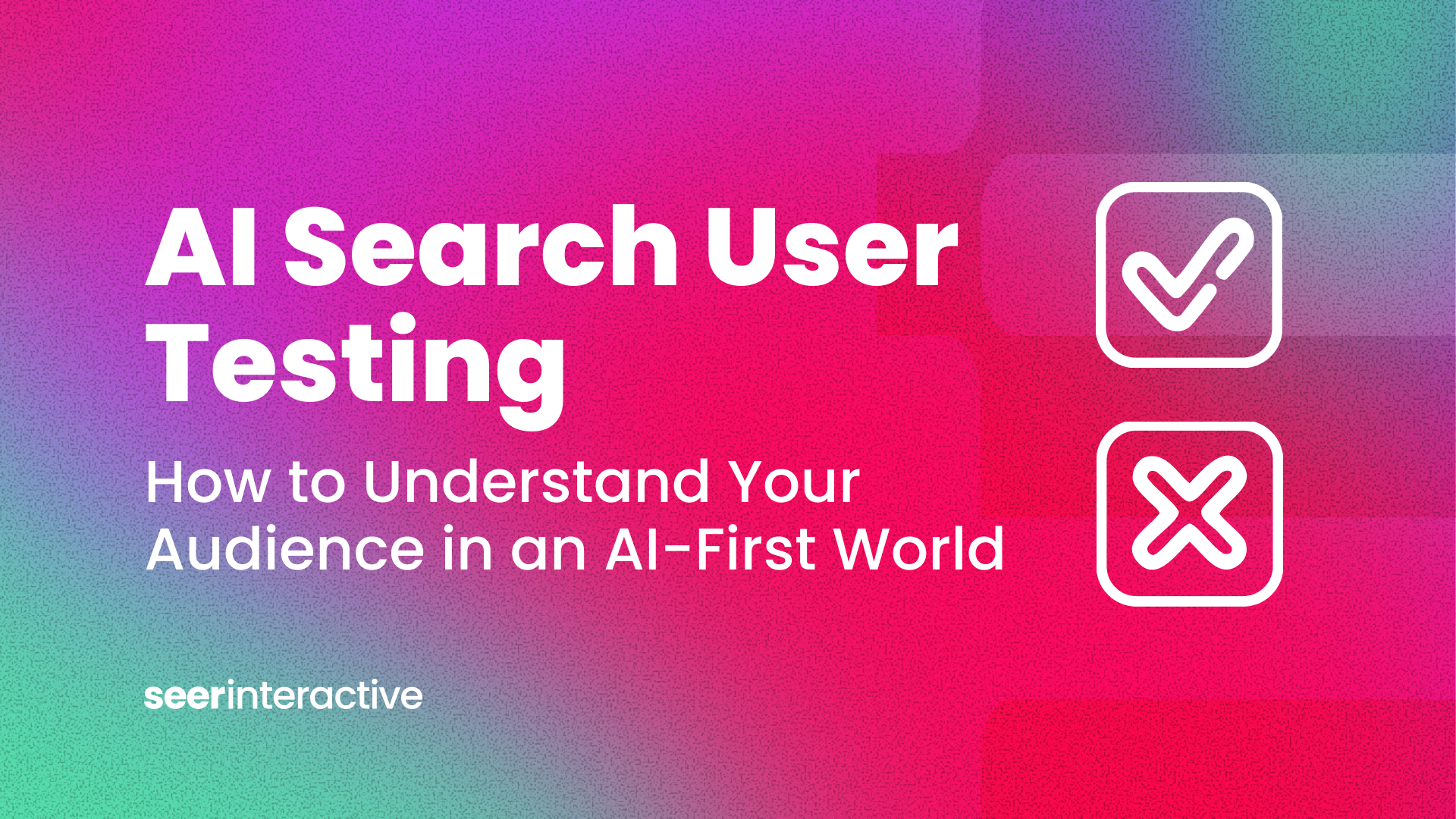We analyzed real data from a single Seer client and uncovered a powerful signal: AI-driven visitors convert at a much higher rate than those from traditional organic search. Why? Stronger intent. Users aren’t just casually browsing, they’re arriving with purpose.
AI Traffic is Small, but Mighty.
We’re starting to see compelling AI data that informed our hypothesis here: although AI traffic has a lower overall volume compared to Google Organic traffic, it converts at a higher rate due to stronger user intent.
Many teams are curious about what these new channels, AI tools like ChatGPT, Perplexity, Gemini, and Claude really mean for their web traffic and conversions. While AI-driven visits still make up a small portion of overall website traffic compared to organic search, that doesn’t mean they aren’t worth paying attention to.
But how do you interpret or act on AI traffic data? Do visitors from AI platforms actually take meaningful action, like signing up for a service or requesting a demo? For many, it’s still unclear. So we ran some experiments to better understand what’s actually happening and what it could mean for the bottom line. .
Methodology
- Analyzed GA4 AI traffic (see how analytics groups AI traffic), from October 1, 2024 - April 30, 2025
- Segmented trending AI sources ChatGPT, Perplexity, Gemini, and Claude and compared to Google Organic by traffic and key events (conversion rate)
1. ChatGPT had a conversion rate of 16% compared to Google Organic’s 1.8%
AI traffic is converting at a much higher rate than Google Organic, with each LLM converting at a higher clip:
- Google Organic - 1.76%.
- ChatGPT - 15.9%.
- Perplexity - 10.5%.
- Claude - 5%
- Gemini - 3%

This is likely due to the users being able to go through their consideration stages within the LLM conversation, so by the time they decides to click-through to the site, they’re high intent, have the key information they need, and are ready to convert.
2. Different AI platforms drove different conversion behaviors
Different LLMs influence conversions in different ways. ChatGPT conversions happened across a lot more types of pages, from solution pages to contact forms. While Gemini conversions took place on practical tools and calculator pages, suggesting those visitors come with a clear task in mind.
It’s showing AI traffic isn’t all the same. Each platform brings visitors with different behaviors and goals, which helps uncover insights you might not notice at first glance.

3. AI traffic combined for just 0.07% of organic traffic
Common question: “How many conversions are we actually talking about?”
We know this is going to be the first question asked. And it’s true, AI traffic combined for just 0.07% of organic traffic.
AI traffic is still a tiny slice compared to Google Organic, with just under 11,000 sessions versus almost 14 million over the past 7 months.
Volume isn’t necessarily the point
While AI sources ‘only’ drove 1,370 conversions for the client, that’s 100% more conversions that we can attribute compared to the previous year.
In accounts that we’re analyzing, we’re seeing AI traffic ranging from 0.05% to nearly 4% of organic traffic already.
If this pace continues, AI could represent 5–10% of organic traffic within a year for early movers.
4. Slices of the pie are small, but growing
ChatGPT drove the majority of AI traffic, making up 61% of those visits. Perplexity follows with nearly 24%, and Gemini comes in at 15%.
ChatGPT’s dominance in driving referral traffic isn’t surprising, given that Sam Altman announced the chatbot hit 1 billion users in April 2025. Claude’s share is very small right now, but that might change as they roll out new features like web search.

5. Users from ChatGPT were more engaged on site, viewing over 2 pages per session

When we looked at how many pages visitors viewed per session across different sources, some compelling differences emerged.
Google Organic users averaged just over 1.2 pages per session, which is pretty standard for a broad, top-of-funnel channel.
ChatGPT traffic stood out, with users viewing an average of 2.3 pages per session - nearly double that of organic search. This suggests deeper on-site exploration, possibly driven by higher curiosity or engagement. It may also indicate that ChatGPT is attracting more mid-funnel visitors, people actively researching, comparing, and evaluating options.
6. ChatGPT had a 62% engagement rate
GA4 defines engagement rate as:
- Lasts 10 seconds or longer.
- Has two or more page views/screen views.
- Triggers one or more conversion events.
Engagement rates for ChatGPT, Perplexity, and Gemini all land in a similar range between 58% and 62%, which is in line with Google Organic’s 60%.
But when you factor in page views per session, the differences become more meaningful.

ChatGPT stands out with both a slightly higher engagement rate and more page views per session, suggesting that users are spending more time on-site and engaging more deeply with the content.
In contrast, Perplexity and Gemini show comparable engagement rates but fewer page views per session. That could point to more focused visits - users coming in, finding what they need quickly, and moving on. This supports the idea that these platforms may be sending more lower-funnel traffic.
Start Here: What to Track, When to Act
1. Dig into your own data.
The first step is figuring out how much AI-driven traffic your site is actually getting. To do this, you’ll want to create a custom channel grouping in your analytics tool that captures visits coming from AI platforms like ChatGPT, Perplexity, Gemini, and Claude.
One way to do this is by using a regex pattern to identify those AI sources in your traffic data. Here’s an example regex pattern we use to group AI traffic sources together:
.*chatgpt.*|.*poe\.com.*|.*copilot.*|.*bard.*|.*gemini.*|.*perplexity.*|.*openai.*|.*claude.*
You can apply this regex as a rule in your channel grouping, usually matching against the “Source” or “Source / Medium” dimension. This helps you separate AI traffic from other organic or referral traffic so you can track it more precisely.
By setting this up, you will be able to monitor AI traffic volume, understand how these visitors behave on your site, and most importantly, see how well they convert compared to other channels.
If you are new to regex, don’t worry. It is basically a way to match specific text patterns. In this case, it helps your analytics tool identify all relevant AI traffic in one place.
2. Estimate the dollar value of the AI driven conversions.
Start simple: What’s a conversion worth to you? How many conversions has AI driven in the past 90 days? That can give you a clear picture of whether this is something to prioritize now, or watch closely.
Let’s say an average conversion is worth $150 to your business. Multiply that by the 1,370 AI-driven conversions we saw, and that’s over $205,000 in the pipeline from traffic that most aren’t even tracking yet.
3. Determine a ‘when to care’ threshold.
Not every team needs to pivot their strategy today but should have a plan for when they will.
Set a benchmark where AI traffic becomes too valuable to ignore. That could be:
- When AI traffic hits 5% of your total organic sessions.
- When AI conversions consistently match or outperform another trusted channel.
- When you start seeing enterprise-ready leads (or bottom-funnel actions) from these sources.
AI-driven traffic is not a single, uniform channel. Different AI platforms bring visitors with very different behaviors and intentions.
Early mover advantage comes from paying attention to signals others overlook. This is just one client’s data, but it’s part of a bigger shift. AI-driven traffic may be small today – but it’s high-intent, growing fast, and largely ignored. Start tracking it now, and you’ll be better positioned to act while others are still catching up.
Ready to analyze your AI traffic and learn where to make your next move? Let's chat.




